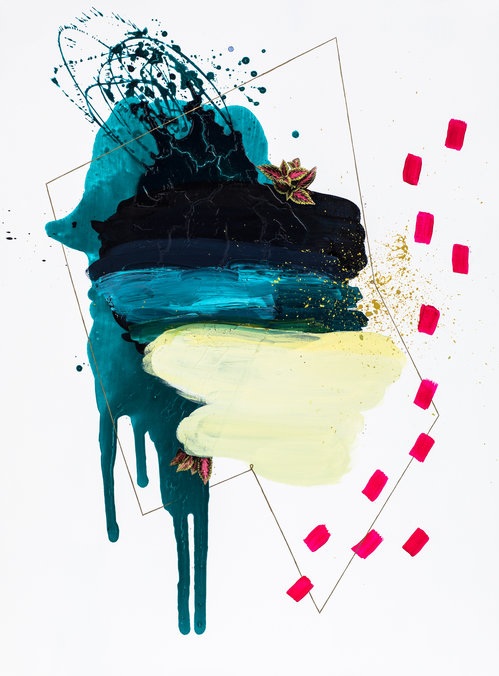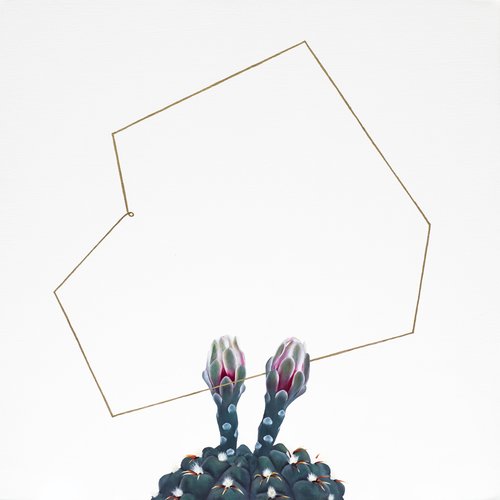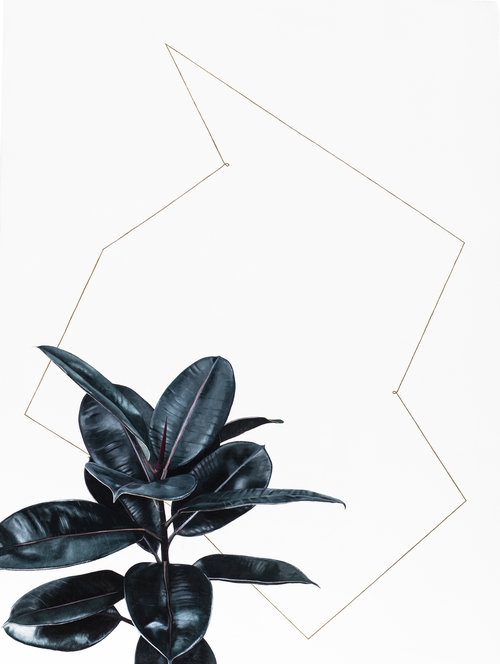Abstract art is like a startling force that can guarantee a level of detachment for the viewer’s mind. Surely as humans we try to decipher and understand it. But when in the face of abstraction it’s best to let our conscious mind rest and let the work speak for itself as the artist intended. Matthew Curry, a Grammy-nominated artist based in Washington D.C. allows the viewer a certain level of detachment that still pulls you into his work through enigmatic features resembling emotions.
Curry’s work ranges from paintings to music packaging, logo design, print design, broadcast design, illustration, animation, audio and interactive media. “Very early on, I knew I wanted to be an artist in some capacity. I was always drawing, and it took more and more precedent over everything else in my life. Early on, my inclinations were more toward the graphic arts and that’s ultimately what I ended up studying in art school,” he says.
Focusing on his paintings, he has developed a cohesive, yet complex style, which he describes as “very layered, sculptural and intense.” Given the abstraction of his work, that’s a pretty damn good way of describing what the eye sees as indefinable. Every drip, line, splatter, stroke, pop of color, gesture mark, and texture-built layer serves the purpose of bringing his pieces to life. With each layer, there is an added dramatic complexity that grows from the foundation within the abstraction. Curry’s use of color, especially black and white, leads the viewer to contemplate contrast of what’s being highlighted or withdrawn. Some pieces include showing us something beneath the surface as an element of surprise.
He explains, “In the early phases of my career, my work was more illustrative and graphic and over time my mark-making and compositions have become more and more abstract and streamlined. [I’m currently inspired by] all my friends, my community, architecture and technology.”
Though his work can be largely abstract, there is a movement to it that brings out the emotion or intention behind it. These emotive characteristics are a product of “action painting.” A technique developed around 1940, which focuses on spontaneity while painting when using dripping, splashing, and gestural strokes, as if stemming from the subconscious.1 Renowned action painters include Jackson Pollock, Willem de Kooning, Joan Mitchell, and Franz Kline.
There is almost something poetic the method in Curry’s work, as it conveys so much emotion through rich visuals coming from the artist’s mind. The powerful touch of details creates an overall mood that cannot be ignored.
Curry’s paintings create a world in which the viewers are the guests and the mysterious feel within the artwork is the honorable host. As you look closely, you might find eyes staring at you from the shadows, undefined creature-like features, and a graceful movement from one element to the next. There is a transformative interaction within the abstraction to evoke emotions, and these details whirl together to create the unique feel of each piece.
Perhaps that’s just the thing one shouldn’t try to define, that these figures come from within. As Jackson Pollock nailed the purpose behind abstraction on the head by saying: “When you’re painting out of your unconscious, figures are bound to emerge… painting is a state of being… Painting is self-discovery. Every good artist paints what he is.”2
What makes Curry’s style unique is its ability to welcome you to its world. Needless to say, it is full of surprises, which you need to accept as they are without making any assumptions.
View the gallery below and for more on the artist’s work, visit his website. All photos courtesy of Matthew Curry.
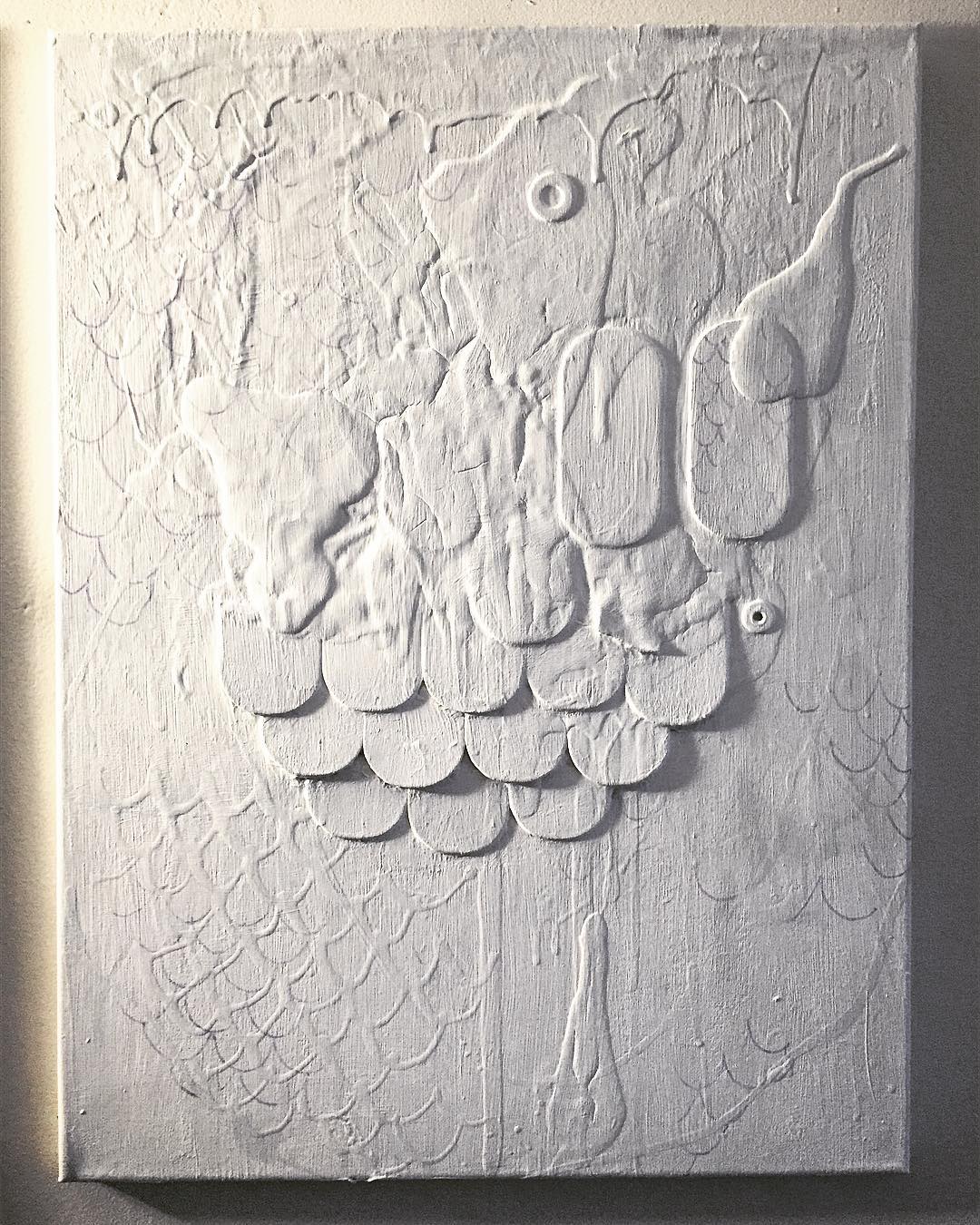
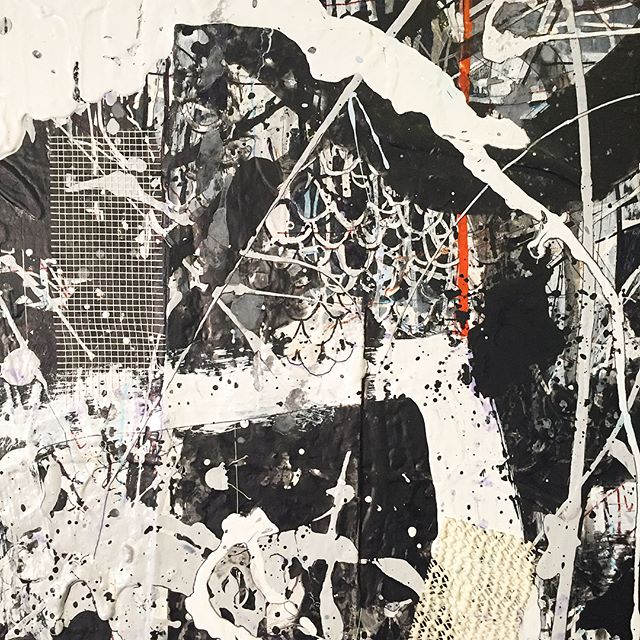
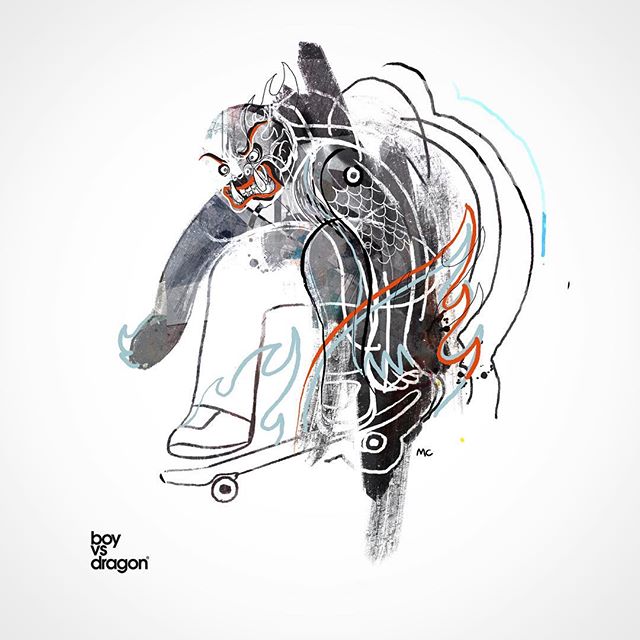
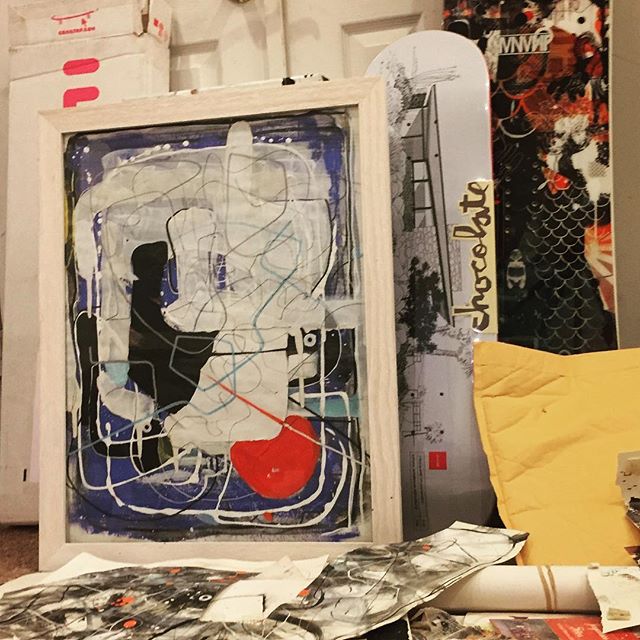
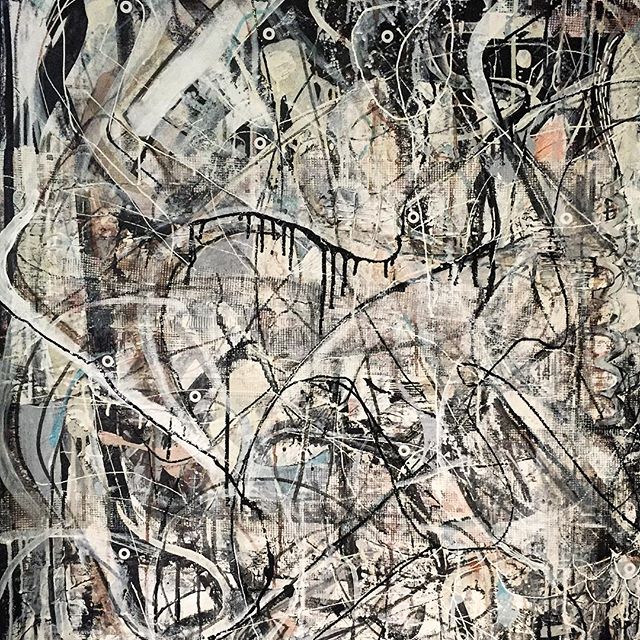
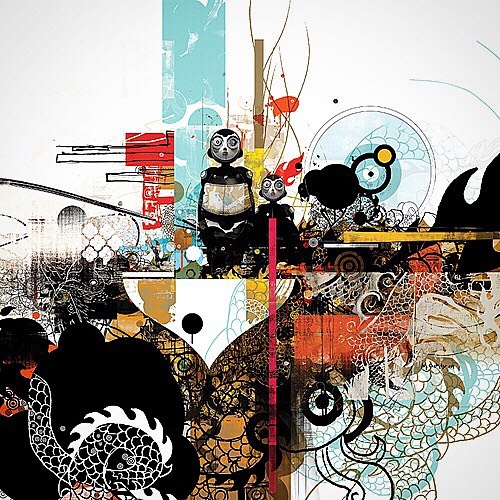
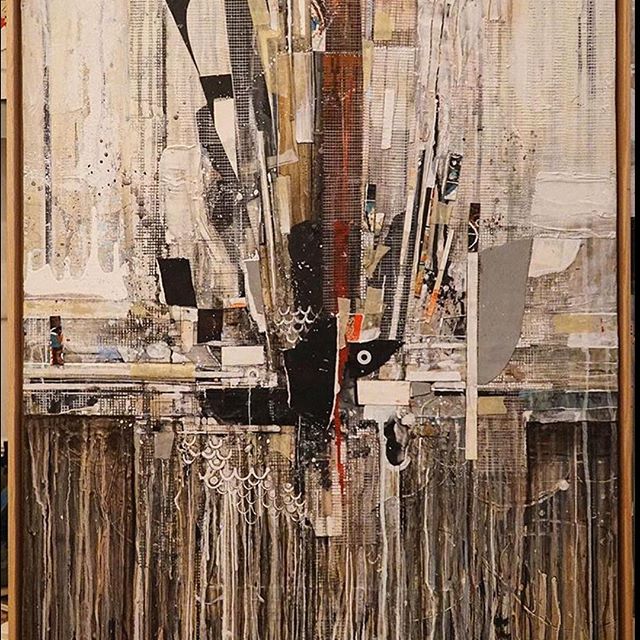
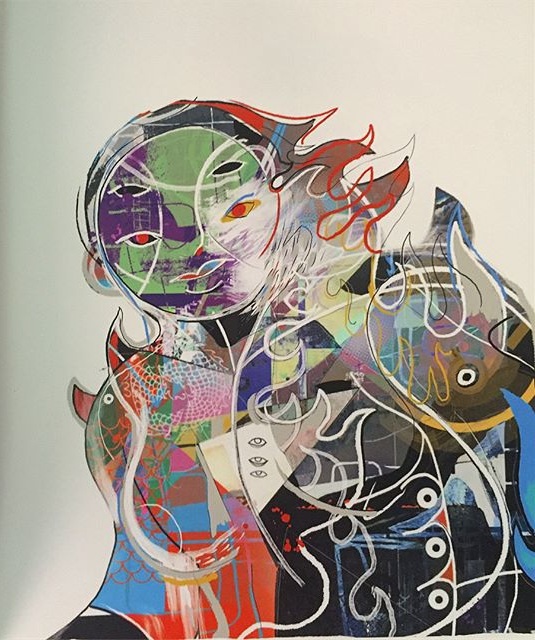
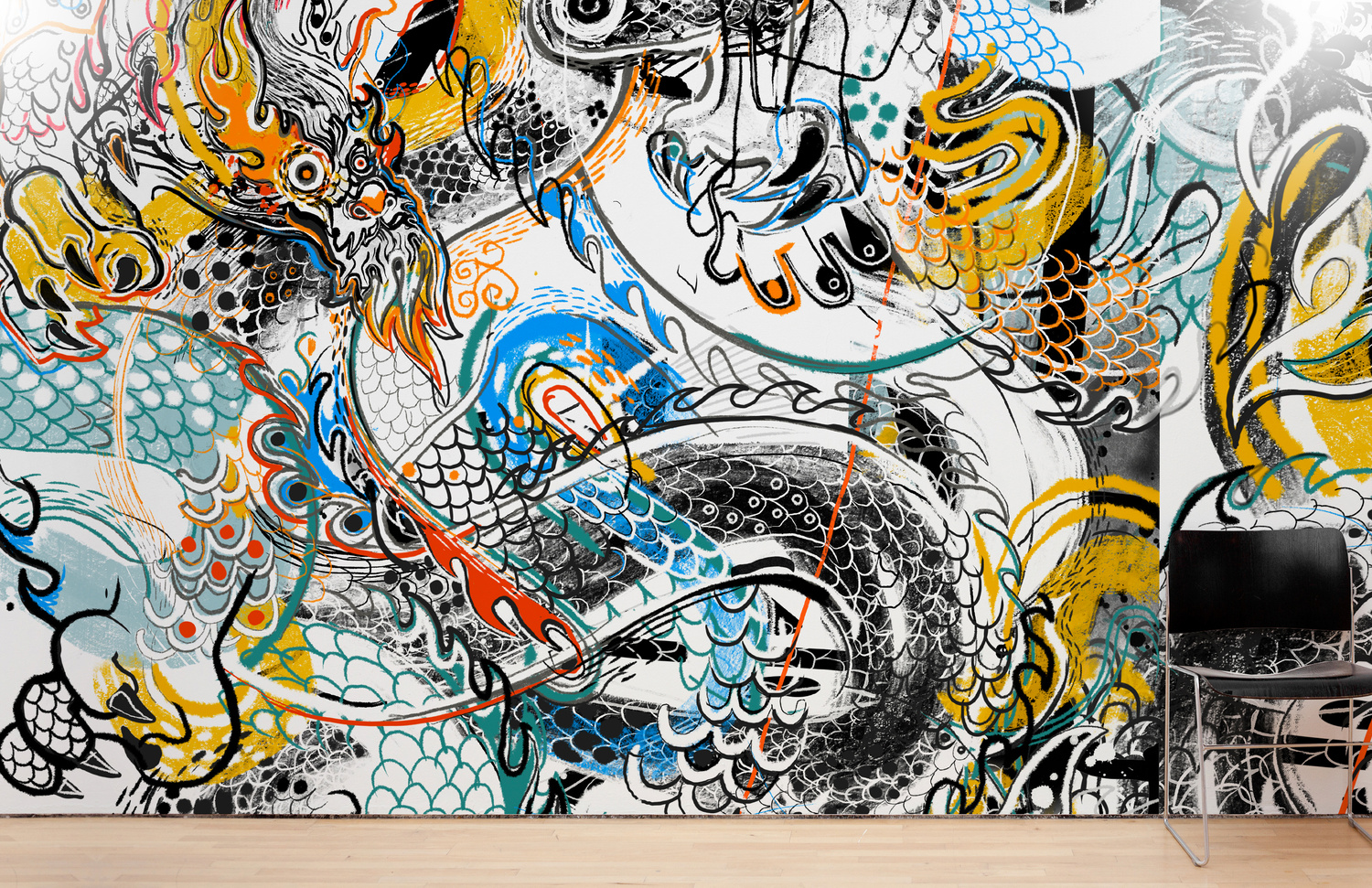
Today’s poetry pairing is inspired by the contrasting light and dark elements in Matthew’s paintings:
The Great Figure
Among the rain
and lights
I saw the figure 5
in gold
on a red
firetruck
moving
tense
unheeded
to gong clangs
siren howls
and wheels rumbling
through the dark city.






